Canberra Hypothetical Competition, Architecture Contest Australia
CAPITheticAL Competition
Canberra Hypothetical Contest, Australian Capital Territory
18 Mar 2013
CAPITheticAL Ideas Competition Student Winners
Student winners envision a new Canberra at Capithetical
18 March 2013 – Woods Bagot’s Kate Dickinson has won the student category with Annabel Koek for their Canberra scheme for Capithetical.
Kate Dickinson from Woods Bagot and fellow University of Sydney Masters of Architecture student Annabel Koeck are student winners of Capithetical, the international competition to design a hypothetical Australian capital city. Winners were announced in Canberra on Friday 15 March as part of Canberra’s Centenary celebrations.
Infilltration: the experimental landscape finds empty spaces in the city to transform over time:
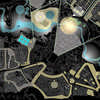
picture courtesy of architects
Dickinson and Koeck’s entry, called Proto: Capital, was an in-depth analysis of the role of a capital city or polis, both as a city and as a tool used for the progress of the entire nation. For Canberra in particular, its identity and sense of place as a ‘normal’ city has been lost in preference for its role as ‘capital’.
Summary of the competition entry:
“The role of a capital city or polis has changed over centuries and will evolve into the future. Its form has continually aspired to be the most successful city form, often in isolation from the nation it represents. However, a more relevant view of the city is not as a construct striving for its own perfection, but as a tool, used instead for the progress of a much larger whole. In this way, and in a Platonic sense, the Capital gives itself to the nation’s cities and population.
“Today Canberra’s sense of place is lost as it tries to be a ‘normal’ city and deny its ‘Capital’ role. While it was born as a young green political seat its relevance to a virtually connected population is waning.
Residents become viewers and caretakers of the nation’s concerns. The national context become Capital content:
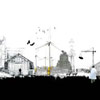
picture courtesy of architects
“Canberra’s new role as a capital will be to embody the nation’s primary concerns and be a point of difference as a kind of laboratory for the nation, continually providing a way forward. The capital will not just be dealing with the now, but also the possibilities of the future. Australians have lost a confidence in their ability to grow. To accept a manageable population growth, they will need confidence restored in their continent’s and capital’s abilities to lead us into a sustainable future.
“This project proposes that Canberra will be an experimental ground for a new city paradigm. This is inherently suggestive of its role as a prototype. The role of a prototype is to test a concept or process, to be later replicated or learnt from. The role of Canberra as the nation’s prototype will give it the tools to be a ‘great’ city. It becomes more of itself through the amplification of its potential, while also giving the city a contemporary relevance to the rest of the nation. The prototype may have a short or long lifespan, it may be small and intricate or large and territorial. It is not static, but instead constantly reforms itself. If any city were to take on this role, it should be our Capital.
“This transient city, a network of parts, will build a landscape of knowledge and experimental practice.”
Kate Dickinson left, Annabel Koeck right at the awards night held at GAD Canberra:
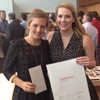
picture courtesy of architects
About Kate Dickinson and Annabel Koeck
We are both born and bred in Sydney and are graduates from the Masters of Architecture at University of Sydney. Prior to this we both completed the Bachelor of Design in Architecture.
Although we attended the same high school we did not know each other until our Architecture worlds collided at university. We have since travelled parts of Europe together and have worked on a number of varied projects together ranging from public art to digital design. As a pair our differences in thinking and processing help balance our team work, while our similarities ground our projects.
Each of us has worked consistently at Architecture firms throughout our university studies and since graduating. Annabel has previously worked extensively in high-end residential projects and urban design, and is currently working on hospitality projects. Kate has previously worked extensively in urban design, commercial and housing projects, and is currently working on a large scale health project.
CAPITheticAL Architecture Competition images / information from Woods Bagot
CAPITheticAL Competition winners – Kate Dickinson and Annabel Koeck of Woods Bagot
9 Jan 2012
CAPITheticAL Ideas Competition
1000 register for national capital ideas competition
Over 1,000 artists, graphic designers, architects, urban planners and environmentalists have registered to enter CAPITheticAL, the competition to review Canberra’s history and help the nation imagine how an Australian national capital might be created today.
“The interest in the Centenary of Canberra competition has been overwhelming with registrations from over 40 countries including Russia, India, Germany and Vietnam” said David Parken, CEO Australian Institute of Architects.
“With so many registrations I look forward to seeing the creative and thought-provoking entries that convey the best design ideas that respond to the current issues of climate change and urban density that face our future cities,” said David Parken, CEO Australian Institute of Architects.
“What we want to see are big creative and hypothetical ideas that are outside the box that will help shape the world’s future cities in the 21st century and beyond.”
“CAPITheticAL has captured the attention of tertiary institutions with the University of Canberra, the Queensland University of Technology, the University of Sydney and RMIT including the competition in their curriculum– we look forward to seeing student ideas on our urban future.”
Online entries opened on 30 September. A Q&A document is available online that addresses the queries from potential entrants about the competition.
$100,000 worth of prizes will be awarded to the winners. Those that have registered can submit their entries from now until the deadline of 31st January 2012.
Prize winners will be announced in March 2013. There will be a curated exhibition of selected entries.
CAPITheticAL is a Centenary of Canberra project, proudly supported by the ACT Government and the Australian Government and administered by the Australian Institute of Architects.
Visit www.capithetical.com.au
23 May 2011
CAPITheticAL Competition Canberra
Australia launches hypothetical international design competition for new capital city
A new international ideas competition for a hypothetical capital city has been launched in Canberra, Australia. With total prizes in excess of AUD$100,000, the CAPITheticAL competition asks the world’s best designers, architects, artists and thinkers to imagine what an Australian capital city ‘might’ look like if created today.
31 Jan 2012 submission deadline for Stage one competition entries
Walter Burley Griffin schematic of Canberra:
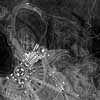
picture courtesy of National Library of Australia
Officially launched at Canberra’s Tesltra Tower on Black Mountain by Competition Ambassador His Excellency Michael Bryce AM AE – a renowned Australian architect and designer – CAPITheticAL is designed to provoke new thinking about the nature of national capitals and planned cities internationally. Entrants are being asked to consider current global challenges such as climate change and urban density, while celebrating the past, present and future of Canberra.
The CAPITheticAL competition is part of the Cenetary of Canberra celebrations. It comes 100 years after the original call for design entries for a capital city for the newly federated Australian nation, which resulted in the establishment of Canberra, designed by competition winners, American architects Walter Burley Griffin and Marion Mahony Griffin. In 1911, in stark contrast to this ‘online’ competition, prospective entrants from around the world were sent via ship a metre long wooden box containing competition guidelines and all items which might be needed to design the nation’s capital. Attendees of the competition launch witnessed the opening of one of the original 725 boxes, which were sent to the 1911 competition entrants. More information on the competition box is available at www.canberra100.com.au.
Speaking at the launch event, Centenary of Canberra Creative Director Robyn Archer said: “Core to our celebration of Canberra’s origins is the recognition that 100 years ago the desire for a new capital for a new nation was bred of a genuinely altruistic nation-building spirit. A century later, CAPITheticAL provides an opportunity for the world’s ‘best thinkers and designers’ to let their imaginations soar once again – to consider and present 21st century ideas addressing the kinds of design challenges that would be faced if they were placed in that situation today.”
The competition will ask entrants to look forward to the big ideas that will shape the world’s future cities in the 21st century and beyond. Ms Archer added:
“Many of the challenges that 2011 entrants will have to take into consideration will be different from those faced 100 years ago; climate change will be at the top of that list, but so will the digital and communications revolution. What will remain the same are the universal questions that the original international competitors faced: what does a capital mean, what should it consist of, and is it more than just a seat of government? Walter Burley Griffin’s winning designs responded clearly to these challenges.”
Australian Institute of Architects National President Karl Fender said: “The competition offers an invaluable opportunity for members of the arts and architecture disciplines to develop creative, dynamic and energetic responses to the very real issues we are facing. How do we develop our urban spaces within the context of today’s challenges, including the imperatives of climate change, increasing densities, a highly urbanised population, as well as straining resources and infrastructure?
“As a hypothetical competition, CAPITheticAL opens a window to the future and the potential for entries which might outline new satellite-based cities or those based on the ocean floor, as entrants examine key issues facing built and unbuilt environments today.”
Walter Burley Griffin schematic of Canberra:
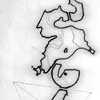
picture courtesy of National Library of Australia
The winners of the CAPITheticAL competition will be announced in March 2013, a century after the official naming of Canberra.
Stage one competition entries are due on 31 January 2012.
Entrants and interested parties can register for the competition at: www.capithetical.com.au
Capital city of Australia, nicknamed the Bush Capital
Location: Canberra, Australia
Canberra – Australian Capital
Canberra chosen in 1908 for the location of the nation’s capital. Construction started in 1913 following an international contest for the city’s design, won by Chicago architects Walter Burley Griffin & Marion Mahony Griffin.
Canberra Architecture – Selection
ATO Headquarters – Australian Tax Office HQ
Cox Richardson Architects & Planners
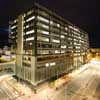
picture from Cox
Australian building
Kingston Foreshore
PTW Architects
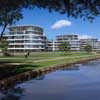
picture from PTW
Kingston Foreshore
National Gallery of Australia – Redevelopment Project
PTW Architects
National Gallery of Australia
Parliament House
Romaldo Giurgola
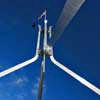
picture © Steven Powell, 2010
Woods Bagot Architects
Comments / photos for the CAPITheticAL Contest – Canberra Architecture Competition page welcome
